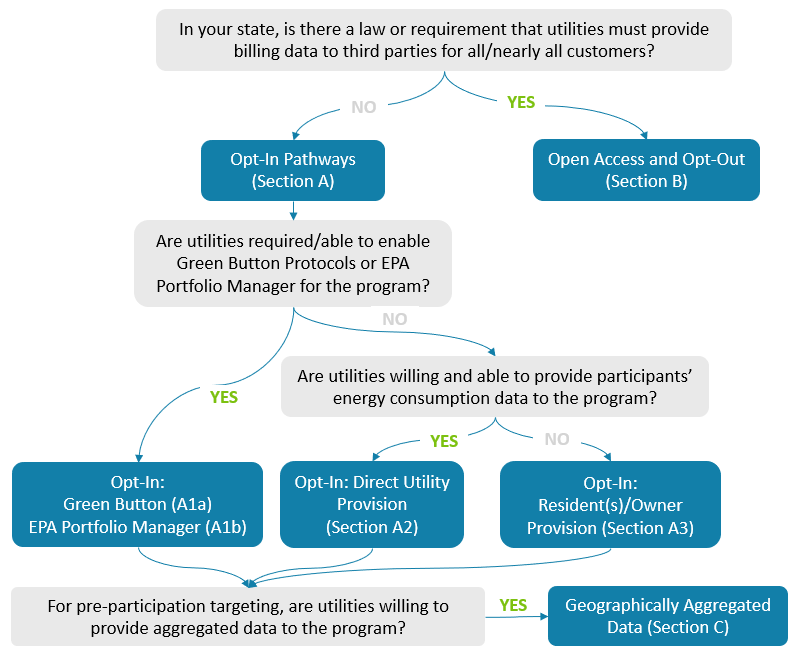

By Ken Wu | Fri, April 26, 24
In the Northeast and Mid-Atlantic region, multifamily buildings account for up to 39 percent of total housing, almost 10 percent above the national average. Multifamily buildings are more likely to house low-income residents, with over 19 million low-income households residing in them. Multifamily buildings are unique because they possess characteristics of both residential and commercial properties. However, current energy efficiency programs do not always cater to the specialized requirements of multifamily occupants. Barriers often appear in program design, implementation, and lack of access to building-level data. A primary obstacle is the accessibility and utility of energy data, which is crucial for designing and implementing these programs, tracking energy performance, identifying equipment issues, prioritizing operational improvements, verifying returns on energy investments, and planning for future budget allocations.
The federal government has taken steps to address these challenges. The Inflation Reduction Act (IRA) allocates $6.6 billion for multifamily properties, including funds for the U.S. Department of Housing and Urban Development (HUD)'s Green and Resilient Retrofit Program (GRRP) and the U.S. Department of Energy (DOE)'s Home Energy Rebate Program. In January 2024, DOE, HUD, and the Environmental Protection Agency (EPA) issued a joint letter to utilities and state utility commissions on the need for access to data to address affordable multifamily buildings. This letter emphasizes the need for improved energy data disclosure for multifamily properties, underscoring the critical role that such data plays in addressing the challenges these properties face.
This blog provides the latest information on the landscape of multifamily data access and explores how states can address these barriers during the implementation of IRA rebates.
Challenges in Data Collection and Aggregation
Despite the critical need for accurate energy data to provide energy efficiency services to multifamily buildings, there is no standard method to collect data and existing collection methods are inefficient. Studies show that these buildings are often not included in major surveys that provide building level data like the Residential Energy Consumption Survey (RECS) and the Commercial Buildings Energy Consumption Survey (CBECS).
This is likely because gathering and aggregating data for a multifamily property is more complicated than for a standard residential or commercial building. Tenants turn over more frequently and there are multiple points of contact to gain consent to share usage data. Additionally, many utilities do not currently have the technological infrastructure capabilities to group all meters in a multifamily building and aggregate the energy usage data at the building level. This necessitates additional steps to aggregate and verify data, making it cumbersome for utility providers and building owners alike. Additionally, energy assessments for multifamily buildings typically differ from those for single-family residences. They often require tenant consent which can deter program implementers from engaging with these properties.
Federal Tools and Programs
Several federal programs aim to facilitate better data collection and usage. The EPA's ENERGY STAR Portfolio Manager provides a platform for building owners to assess and rate their energy usage against national medians. This program has significantly increased awareness and adoption of energy efficiency measures by providing a consistent framework for data publication. However, it faces limitations in multifamily applications due to issues such as the need for tenant data verification.
Similarly, Green Button Connect aims to standardize and secure energy data transfers between utilities, third parties, and customers. This enables customers to access their energy usage data and consent to its sharing with third parties, who can then use it to implement projects or develop energy efficiency policies. To date, over 82 utilities have enrolled in the Green Button Connect program across the nation, with 35 of them operating in the Northeast and Mid-Atlantic region. Increasing adoption of Green Button Connect is complicated as it hinges on voluntary adoption by utilities or action on the state level through legislation or a regulatory mandate.
While these programs and tools provide valuable opportunities and pathways for wider data access, they are not sufficient in providing the type of compressive data access outlined in the joint letter.
State and Utility Practices
The extent of utility data access varies widely at the state level, often dependent on specific laws or regulations mandating such access. The HUD Multifamily Utility Data Collection dataset offers a deeper insight into the accessibility of these data. According to this dataset, out of the 200 utilities sampled nationally only about 13 percent of them meet HUD standards for providing anonymized, aggregated whole-building data without requiring individual tenant authorization. For the Northeastern and Mid-Atlantic region, this figure drops to 11.76 percent (this figure does not include Vermont as the state’s information is not in the HUD dataset).
States including California, the District of Columbia, and Oregon have set precedents with comprehensive mandates for data disclosure, including specific provisions for multifamily buildings. In the Northeast and the Mid-Atlantic region, examples of similar measures include the District of Columbia’s Sustainable DC Act of 2014 which requires utilities to provide multifamily whole-building data upon request to building owners, which can be directly uploaded to the ENERGY STAR Portfolio Manager. The New Jersey BPU has also issued data access requirements specific to multifamily under its benchmarking program. The requirements mandate that utilities deliver aggregated building-level data for any properties larger than 25,000 square feet.
The Road Ahead
The significance of data access continues to rise on the national level, the IRA encourages states to collaborate more closely with utilities, third parties, and other stakeholders to create data access plans. These plans are essential for navigating the complexities of data collection, ensuring customer consent, and addressing the barriers that multifamily housing faces in participating in energy efficiency programs. DOE has designed the following chart to guide states in finding solution that best fit their context.
As we move forward, the focus on multifamily properties under the IRA will continue, presenting an opportunity for regulatory commissions and utilities to address the current barriers and make crucial data accessible and beneficial for the communities they serve. This concerted effort will unlock new possibilities for energy efficiency improvements and foster a more inclusive approach to energy management in multifamily housing.

